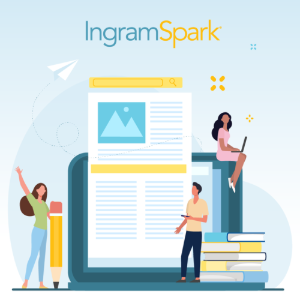Updated December 19, 2024
BISAC subject codes are essentially genre codes. These codes guide shelving, categorization, merchandising, and marketing efforts. BISAC codes help signal to potential buyers, retailers, distributors, and search engines what your book is about – the primary genre(s), topic(s), and theme(s) that matter in regard to your book. Without these codes, readers and those within the industry cannot identify what your book is about or if they'd like to stock or read it.
Tips for Selecting the Right BISAC Subject Codes
- One BISAC code is required, but three is considered best practice to help ensure the broadest reach for your book.
- Why only give your book one opportunity to be found when you can give it three?
- Books are seldom about just one thing. Look for codes that reflect the breadth and depth of your book's content.
- Choose BISAC codes that accurately and clearly describe the content of your book as a whole.
- Don't select codes that pertain to only one chapter or reflect only a peripheral topic or theme of the work. If someone was looking for a book about a particular topic, imagine their disappointment if they only found one paragraph about it in your 200-page book. Be kind to your readers by being as honest as possible with your BISAC codes.
- The first subject code should be the best, most accurate, and most specific code possible.
- For example, the BISAC code HEALTH & FITNESS / Diet & Nutrition / Weight Loss is better than HEALTH & FITNESS / Diet & Nutrition / General or HEALTH & FITNESS / General. The more specific your code, the more targeted the reader it will attract. The more targeted the reader attracted to your book, the more likely you are to secure a purchase.
- If possible, select codes from multiple top-level BISAC categories to broaden discovery.
- For instance, you might classify actress and comedian Mindy Kaling’s memoir under both BIOGRAPHY & AUTOBIOGRAPHY and HUMOR.
- Avoid “General” codes whenever possible. We cannot stress this enough.
-
- You do not need to include a “General” code if you have already selected a more specific code for a given category or subcategory. For example, if you have selected GARDENING / Flowers / Orchids, you do not need to also provide GARDENING / Flowers / General.
- Do not use FIC000000 FICTION / General unless there is genuinely no better, more specific code. It's rare that there will be no better code to describe your book than FICTION / General. Selecting this code is almost a waste of one of your BISAC subject code slots.
- BISAC codes should be consistent across different formats of the same work. Your ebook and print book BISAC subject codes should match.
- Works intended for children ages 0-11 should have JUVENILE FICTION or JUVENILE NONFICTION codes.
- Works intended for young readers and teens ages 12-17 should have YOUNG ADULT FICTION or YOUNG ADULT NONFICTION codes.
- Fiction and nonfiction codes should not be used on the same title.
- For example, FICTION / Religious and RELIGION / Christian Living / General should not be used on the same title. Codes from the RELIGION category are intended for nonfiction works about religion topics. FICTION / Religious is intended for fictional novels with a religious theme.












